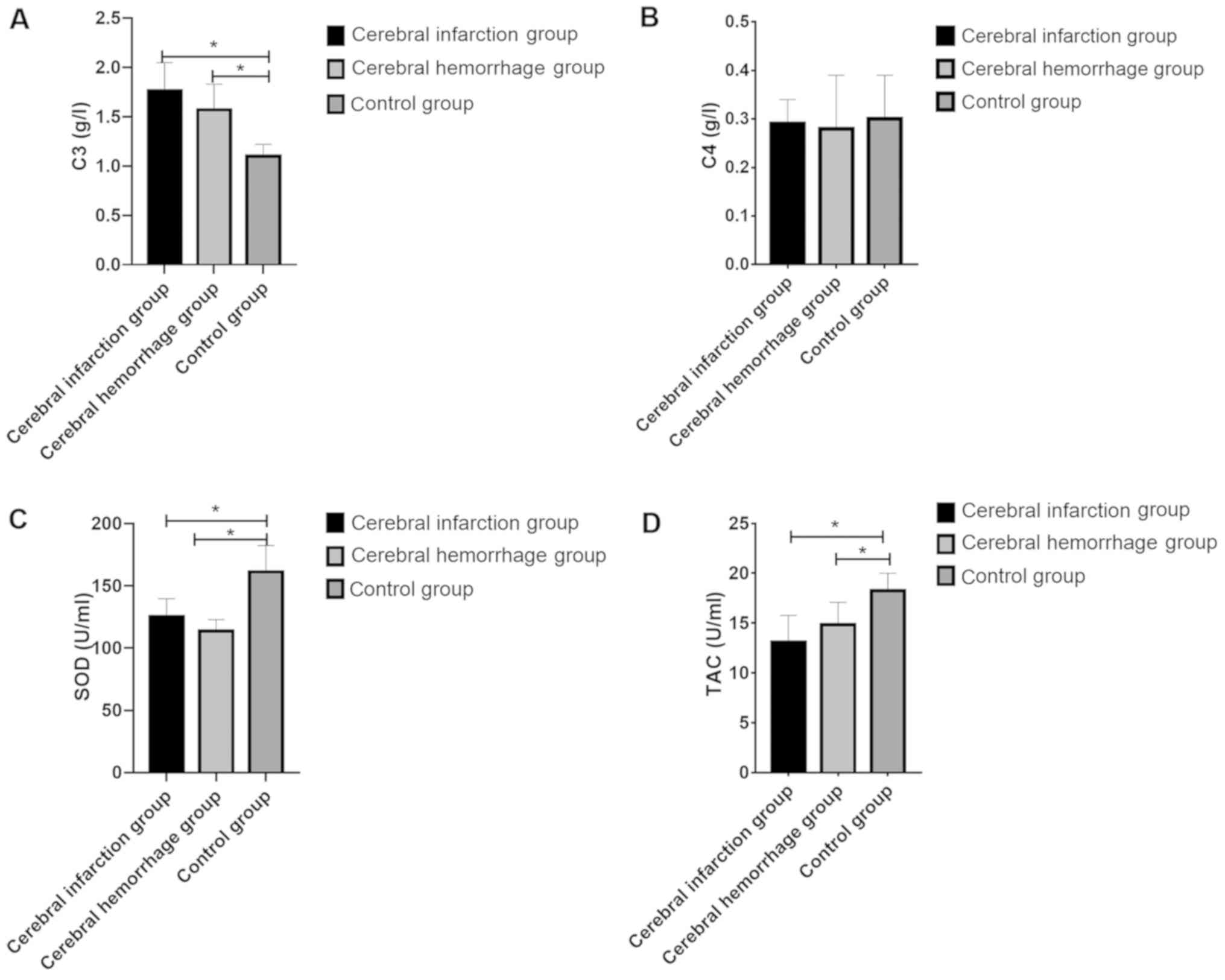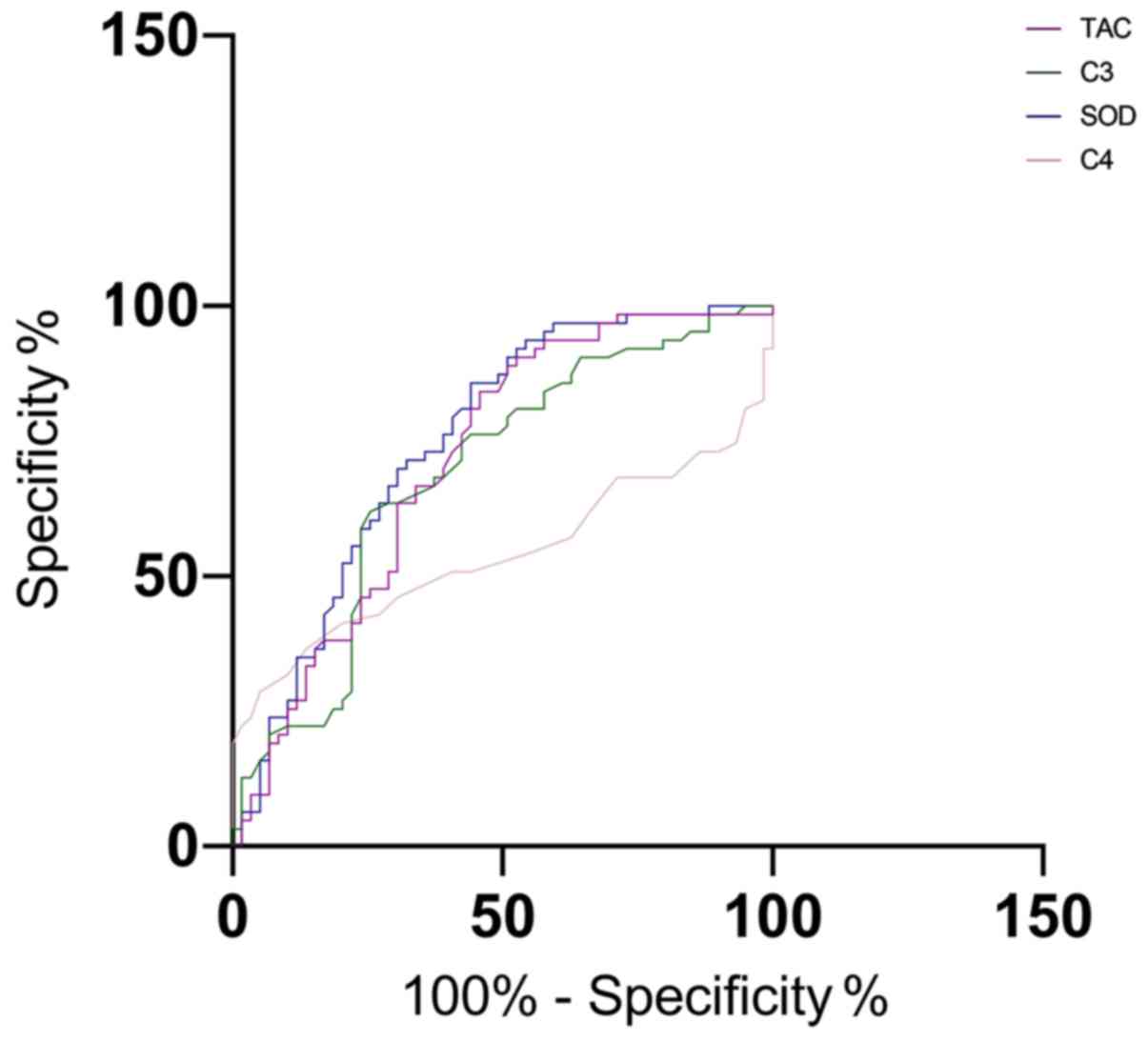|
1
|
Feigin VL, Norrving B and Mensah GA:
Global burden of stroke. Circ Res. 120:439–448. 2017. View Article : Google Scholar : PubMed/NCBI
|
|
2
|
Nogueira RG, Jadhav AP, Haussen DC, Bonafe
A, Budzik RF, Bhuva P, Yavagal DR, Ribo M, Cognard C, Hanel RA, et
al DAWN Trial Investigators, : Thrombectomy 6 to 24 hours after
stroke with a mismatch between deficit and infarct. N Engl J Med.
378:11–21. 2018. View Article : Google Scholar : PubMed/NCBI
|
|
3
|
Keep RF, Andjelkovic AV, Xiang J,
Stamatovic SM, Antonetti DA, Hua Y and Xi G: Brain endothelial cell
junctions after cerebral hemorrhage: Changes, mechanisms and
therapeutic targets. J Cereb Blood Flow Metab. 38:1255–1275. 2018.
View Article : Google Scholar : PubMed/NCBI
|
|
4
|
An SJ, Kim TJ and Yoon BW: Epidemiology,
risk factors, and clinical features of intracerebral hemorrhage: An
update. J Stroke. 19:3–10. 2017. View Article : Google Scholar : PubMed/NCBI
|
|
5
|
Lai M, Wang D, Lin Z and Zhang Y: Small
molecule copper and its relative metabolites in serum of cerebral
ischemic stroke patients. J Stroke Cerebrovasc Dis. 25:214–219.
2016. View Article : Google Scholar : PubMed/NCBI
|
|
6
|
Wang W, Gao C, Yu C, Liu S, Hou D, Wang Y,
Wang C, Mo L and Wu J: No association between elevated total
homocysteine levels and functional outcome in elderly patients with
acute cerebral infarction. Front Aging Neurosci. 9:702017.
View Article : Google Scholar : PubMed/NCBI
|
|
7
|
Fanning JP, See Hoe LE, Passmore MR,
Barnett AG, Rolfe BE, Millar JE, Wesley AJ, Suen J and Fraser JF:
Differential immunological profiles herald magnetic resonance
imaging-defined perioperative cerebral infarction. Ther Adv Neurol
Disorder. Mar 13–2018.(Epub ahead of print). doi:
10.1177/1756286418759493. View Article : Google Scholar
|
|
8
|
Ono H, Nishijima Y, Ohta S, Sakamoto M,
Kinone K, Horikosi T, Tamaki M, Takeshita H, Futatuki T, Ohishi W,
et al: Hydrogen gas inhalation treatment in acute cerebral
infarction: A randomized controlled clinical study on safety and
neuroprotection. J Stroke Cerebrovasc Dis. 26:2587–2594. 2017.
View Article : Google Scholar : PubMed/NCBI
|
|
9
|
Aronowski J and Zhao X: Molecular
pathophysiology of cerebral hemorrhage: Secondary brain injury.
Stroke. 42:1781–1786. 2011. View Article : Google Scholar : PubMed/NCBI
|
|
10
|
Lattanzi S, Brigo F, Trinka E, Cagnetti C,
Di Napoli M and Silvestrini M: Neutrophil-to-lymphocyte ratio in
acute cerebral hemorrhage: A system review. Transl Stroke Res.
10:137–145. 2019. View Article : Google Scholar : PubMed/NCBI
|
|
11
|
Bravata DM, Sico J, Vaz Fragoso CA, Miech
EJ, Matthias MS, Lampert R, Williams LS, Concato J, Ivan CS, Fleck
JD, et al: Diagnosing and treating sleep apnea in patients with
acute cerebrovascular disease. J Am Heart Assoc. 7:e0088412018.
View Article : Google Scholar : PubMed/NCBI
|
|
12
|
Qu S and Guo J: Clinical significance and
difference of some biochemical indexes in patients with cerebral
infarction and cerebral hemorrhage. Xiandai Jianyan Yixue Zazhi.
33:114–117. 2018.(In Chinese).
|
|
13
|
Qi FM, Yuan X and Dong Y: Analysis of SOD
and HCY in acute cerebral infarction and acute cerebral hemorrhage
patients. Int J Lab Med. 10:1323–1324. 2015.(In Chinese).
|
|
14
|
Zhou J and Zhang J: Identification of
miRNA-21 and miRNA-24 in plasma as potential early stage markers of
acute cerebral infarction. Mol Med Rep. 10:971–976. 2014.
View Article : Google Scholar : PubMed/NCBI
|
|
15
|
Lin Z, Lin H, Li W, Huang Y and Dai H:
Complement component C3 promotes cerebral ischemia/reperfusion
injury mediated by TLR2/NFκB activation in diabetic mice. Neurochem
Res. 43:1599–1607. 2018. View Article : Google Scholar : PubMed/NCBI
|
|
16
|
Simats A, García-Berrocoso T and Montaner
J: Neuroinflammatory biomarkers: From stroke diagnosis and
prognosis to therapy. Biochim Biophys Acta. 1862:411–424. 2016.
View Article : Google Scholar : PubMed/NCBI
|
|
17
|
Anrather J and Iadecola C: Inflammation
and stroke: An overview. Neurotherapeutics. 13:661–670. 2016.
View Article : Google Scholar : PubMed/NCBI
|
|
18
|
Ighodaro OM and Akinloye OA: First line
defence antioxidants-superoxide dismutase (SOD), catalase (CAT) and
glutathione peroxidase (GPX): Their fundamental role in the entire
antioxidant defence grid. Alexandria J Med. 54:287–293. 2018.
View Article : Google Scholar
|
|
19
|
Gonullu H, Aslan M, Karadas S, Kati C,
Duran L, Milanlioglu A, Aydin MN and Demir H: Serum prolidase
enzyme activity and oxidative stress levels in patients with acute
hemorrhagic stroke. Scand J Clin Lab Invest. 74:199–205. 2014.
View Article : Google Scholar : PubMed/NCBI
|
|
20
|
Estevez AY, Stadler B and Erlichman JS:
In-vitro analysis of catalase-, oxidase-and SOD-mimetic activity of
commercially available and custom-synthesized cerium oxide
nanoparticles and assessment of neuroprotective effects in a
hippocampal brain slice model of ischemia. FASEB J. 31:693.5.
2017.
|
|
21
|
Llull L, Amaro S and Chamorro Á:
Administration of uric acid in the emergency treatment of acute
ischemic stroke. Curr Neurol Neurosci Rep. 16:42016. View Article : Google Scholar : PubMed/NCBI
|
|
22
|
Milanlioglu A, Aslan M, Ozkol H, Çilingir
V, Nuri Aydın M and Karadas S: Serum antioxidant enzymes activities
and oxidative stress levels in patients with acute ischemic stroke:
Influence on neurological status and outcome. Wien Klin Wochenschr.
128:169–174. 2016. View Article : Google Scholar : PubMed/NCBI
|
|
23
|
Zhang X, Huang WJ and Yu ZG: Relationship
between the hypersensitive C-reactive protein (hs-CRP) level and
the prognosis of acute brainstem infarction. Cell Biochem Biophys.
72:107–110. 2015. View Article : Google Scholar : PubMed/NCBI
|
|
24
|
Lee JH, Kwon KY, Yoon SY, Kim HS and Lim
CS: Characteristics of platelet indices, neutrophil-to-lymphocyte
ratio and erythrocyte sedimentation rate compared with C reactive
protein in patients with cerebral infarction: A retrospective
analysis of comparing haematological parameters and C reactive
protein. BMJ Open. 4:e0062752014. View Article : Google Scholar : PubMed/NCBI
|
|
25
|
Li W, Jin C, Vaidya A, Wu Y, Rexrode K,
Zheng X, Gurol ME, Ma C, Wu S and Gao X: Blood pressure
trajectories and the risk of intracerebral hemorrhage and cerebral
infarction: A prospective study. Hypertension. 70:508–514. 2017.
View Article : Google Scholar : PubMed/NCBI
|
|
26
|
Hsieh FI and Chiou HY: Stroke: Morbidity,
risk factors, and care in Taiwan. J Stroke. 16:59–64. 2014.
View Article : Google Scholar : PubMed/NCBI
|
















